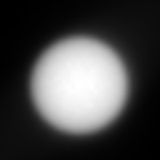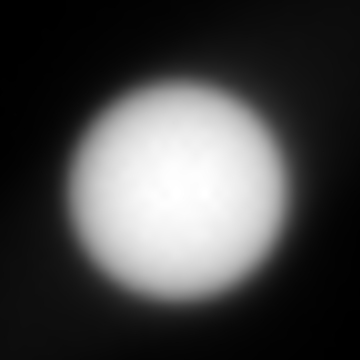
Solar eclipses on Mars
Encyclopedia
The two moons of Mars
—Phobos
and Deimos
— are much smaller than the Earth's moon, greatly reducing solar eclipses on that planet.

Due to the small size of Phobos (about 12 by 14 miles) and its rapid orbital motion, an observer on the surface of Mars would never experience a solar eclipse for longer than about thirty seconds. Phobos also takes only 7 hours 39 minutes to orbit Mars, while a Martian day is 24 hours 37 minutes long, meaning that Phobos can create two eclipses per Martian day. These are annular eclipses, because Phobos is not quite large enough or close enough to Mars to create a total eclipse
.
.
which can be seen from Earth. However, shortly after the first artificial satellites were placed in orbit
around Mars, the shadow of Phobos was seen in pictures transmitted back to Earth.
Mars
Mars is the fourth planet from the Sun in the Solar System. The planet is named after the Roman god of war, Mars. It is often described as the "Red Planet", as the iron oxide prevalent on its surface gives it a reddish appearance...
—Phobos
Phobos (moon)
Phobos is the larger and closer of the two natural satellites of Mars. Both moons were discovered in 1877. With a mean radius of , Phobos is 7.24 times as massive as Deimos...
and Deimos
Deimos (moon)
Deimos is the smaller and outer of Mars's two moons . It is named after Deimos, a figure representing dread in Greek Mythology. Its systematic designation is '.-Discovery:Deimos was discovered by Asaph Hall, Sr...
— are much smaller than the Earth's moon, greatly reducing solar eclipses on that planet.
Eclipses caused by Phobos

Due to the small size of Phobos (about 12 by 14 miles) and its rapid orbital motion, an observer on the surface of Mars would never experience a solar eclipse for longer than about thirty seconds. Phobos also takes only 7 hours 39 minutes to orbit Mars, while a Martian day is 24 hours 37 minutes long, meaning that Phobos can create two eclipses per Martian day. These are annular eclipses, because Phobos is not quite large enough or close enough to Mars to create a total eclipse
Total Eclipse
A total eclipse is an eclipse where either the Sun is entirely covered by the Moon, or the Earth's shadow entirely covers the Moon.Total Eclipse may also refer to:-Music:* Total Eclipse , a Goa trance music group...
.
Eclipses caused by Deimos
Deimos is too small (about five by six miles) and too far from Mars to cause an eclipse. The best an observer on Mars would see would be a small object in transit across the SunSun
The Sun is the star at the center of the Solar System. It is almost perfectly spherical and consists of hot plasma interwoven with magnetic fields...
.
View from Earth
Both moons are too small to cast a shadow on the planetPlanet
A planet is a celestial body orbiting a star or stellar remnant that is massive enough to be rounded by its own gravity, is not massive enough to cause thermonuclear fusion, and has cleared its neighbouring region of planetesimals.The term planet is ancient, with ties to history, science,...
which can be seen from Earth. However, shortly after the first artificial satellites were placed in orbit
Orbit
In physics, an orbit is the gravitationally curved path of an object around a point in space, for example the orbit of a planet around the center of a star system, such as the Solar System...
around Mars, the shadow of Phobos was seen in pictures transmitted back to Earth.

